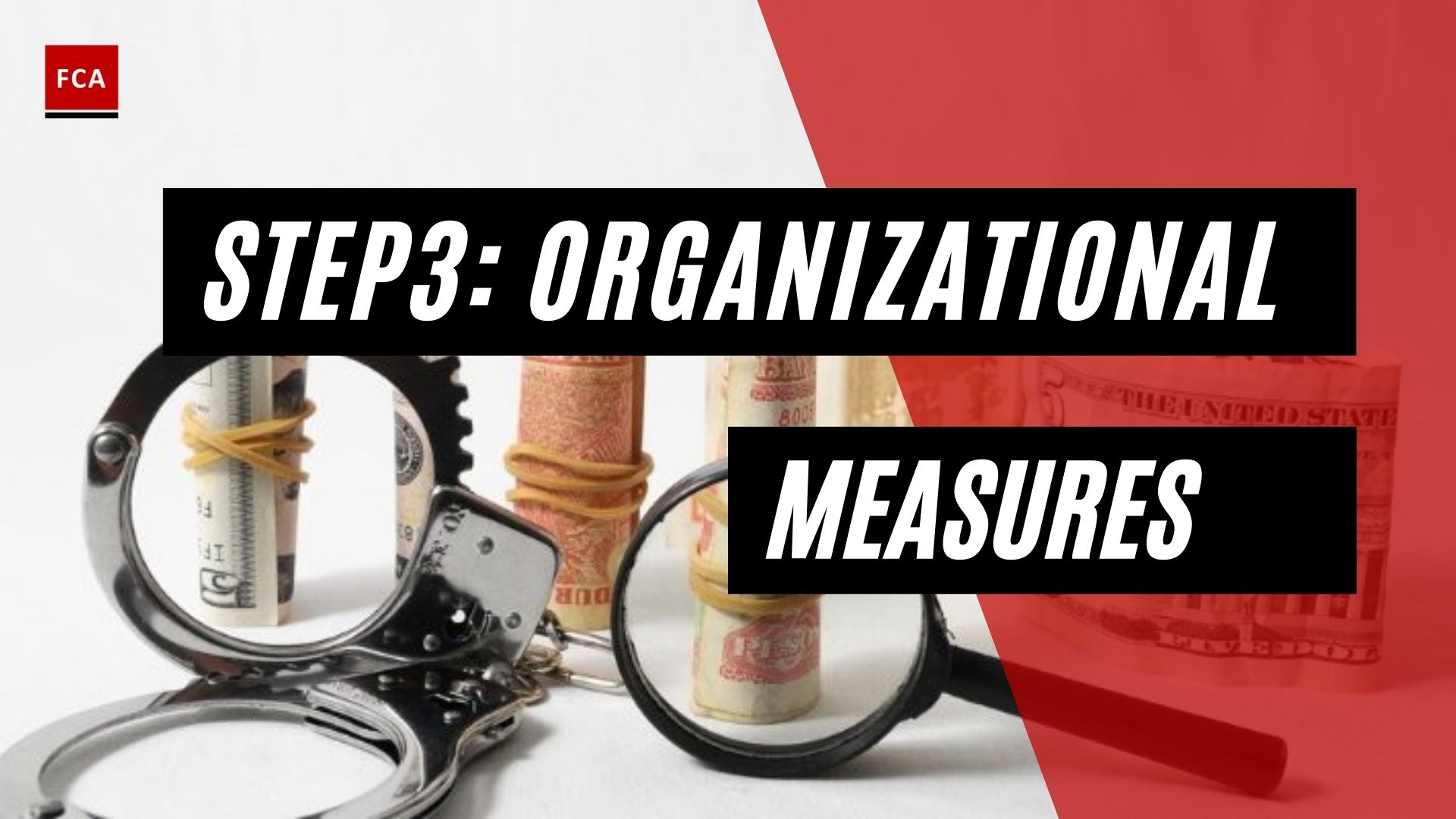Money Laundering Through Real Estate: An Overview
Money laundering through real estate has become a significant concern in the global fight against financial crime. Criminals exploit the real estate sector to legitimize their illicit funds and obscure the origins of the money. Understanding the scope of real estate money laundering and the trends associated with it is crucial in developing effective anti-money laundering measures.
The Scope of Real Estate Money Laundering
Money laundering through real estate poses significant risks, with global estimates suggesting that it accounts for about 10-30% of large money laundering cases worldwide. Criminals are drawn to the real estate market due to its ability to hide the source of illicit funds and take advantage of price fluctuations that make it easier to move money around undetected (Financial Crime Academy).
At least $2.3 billion has been laundered via U.S. real estate transactions in the last five years, based on a review of over 100 publicly reported real estate money laundering cases in the U.S., United Kingdom, and Canada. This highlights the scale of the issue and the attractiveness of the U.S. as a destination for illicit funds (ICIJ). Public officials and politically exposed persons (PEPs) were involved in over half of the U.S. cases reviewed, emphasizing the ease of hiding illicit funds in the real estate sector.
Real Estate Money Laundering Trends
Money laundering schemes in the real estate sector can involve intricate methods to conceal illicit funds within legitimate transactions. Criminals often utilize front companies, shell companies, straw buyers, and false appraisals to hide the true nature of the funds. The concealment of beneficial ownership through nominee directors and shareholders further complicates the tracing of the true source of funds.
The real estate sector is particularly vulnerable to money laundering due to regulatory compliance challenges and inconsistent monitoring practices. These vulnerabilities can be exploited by money launderers, facilitating illicit financial activities. Geographic targeting orders (GTOs) are a primary tool used in the U.S. to identify potential money laundering events in real estate transactions. However, more than 60% of the U.S. cases examined involved properties outside areas covered by the targeting orders, revealing the inadequacy of the current system in addressing money laundering through real estate (ICIJ).
To combat real estate money laundering effectively, strengthening regulatory frameworks, enhancing due diligence and know your customer (KYC) procedures, and improving cooperation among stakeholders are essential steps. Additionally, addressing the evolving nature of money laundering schemes and harnessing technology for better detection and prevention are crucial for the future of real estate anti-money laundering efforts (real estate money laundering prevention).
By understanding the scope and trends of money laundering through real estate, regulatory authorities, professionals working in compliance, risk management, and anti-money laundering can develop robust measures to combat this illicit activity effectively.
Money Laundering Schemes in Real Estate
Money laundering through real estate is a significant concern, with criminals exploiting various schemes to conceal and legitimize illicit funds. Understanding these schemes is crucial in combating real estate-related money laundering activities. Here are three common money laundering schemes observed in the real estate sector:
Using Shell Companies to Conceal Illicit Funds
Shell companies play a significant role in money laundering schemes within the real estate industry. These companies are often used to obscure the identities of the true buyers, making it easier for individuals to launder money through property purchases. Criminals create complex webs of shell companies or hidden property ownership to obscure the trail of funds in money laundering activities. By utilizing shell companies, money launderers can distance themselves from the illicit funds and make it challenging for authorities to trace the source of the money.
Inflating Property Values for Money Laundering
Another prevalent money laundering scheme in real estate involves inflating property values. Criminals manipulate property prices to introduce illicit funds into the legitimate economy while creating the appearance of a legitimate transaction. By artificially inflating property values, money launderers can move significant amounts of money through real estate transactions, making it difficult for authorities to identify the illicit origins of the funds. This practice can lead to overall instability in the property market, creating challenges for genuine buyers and sellers.
Property Flipping as a Money Laundering Technique
Property flipping, typically associated with legitimate real estate investments, can be exploited for money laundering purposes. Criminals purchase properties and quickly resell them at an inflated price, creating the appearance of legitimate transactions. Through this process, illicit funds can be introduced into the real estate market while generating seemingly legitimate profits. Property flipping can be particularly attractive to money launderers due to the potential to quickly move funds and obscure their origin (Sanction Scanner).
It is important to note that combating real estate money laundering requires a comprehensive approach involving regulatory frameworks, due diligence procedures, and cooperation among stakeholders. By understanding the methods employed by money launderers, authorities, professionals working in compliance, risk management, anti-money laundering, and anti-financial crime can better detect and prevent illicit activities in the real estate sector.
To learn more about real estate money laundering, including global perspectives, challenges in detection, and future anti-money laundering efforts, continue reading the respective sections of this article.
Challenges in Detecting Real Estate Money Laundering
Detecting and preventing money laundering through real estate poses significant challenges due to various factors. Inadequate anti-money laundering (AML) measures and the role of gatekeepers in facilitating money laundering are key challenges that need to be addressed.
Inadequacy of Anti-Money Laundering Measures
Current AML measures in the real estate sector have proven to be inadequate in effectively detecting and preventing money laundering. The United States, in particular, has lost ground compared to the United Kingdom and Europe in combating real estate money laundering (ICIJ). While the U.S. initially took regulatory steps by including “persons involved in real estate closings and settlements” in the definition of financial institutions under the Bank Secrecy Act, it has not kept up with legislative changes and anti-money laundering efforts undertaken by other countries.
One method used in the U.S. to identify potential money laundering events is the implementation of Geographic Targeting Orders (GTOs). However, more than 60% of the reviewed money laundering cases involved properties outside areas covered by GTOs, highlighting the insufficiency of the current system in addressing money laundering through real estate.
Furthermore, the focus of the U.S. AML regime primarily revolves around residential real estate purchases, while a significant portion of the money laundering cases analyzed involved commercial real estate transactions. Commercial deals, with their complex financing arrangements and multiple parties involved, provide an easy avenue for laundering illicit funds on a large scale (ICIJ). Enhancing AML measures to encompass commercial real estate transactions is crucial in combating money laundering effectively.
Role of Gatekeepers in Facilitating Money Laundering
Gatekeepers, including real estate agents, lawyers, and accountants, play a significant role in facilitating money laundering within the real estate sector. These professionals often assist in concealing the illicit origin of funds and enable the movement of illicit money through real estate transactions. Regulating and holding gatekeepers accountable is essential in preventing money laundering schemes.
The report also highlights the need to regulate private investment advisers, particularly private equity, venture capital, and hedge funds. These investment vehicles are frequently used to launder money through the real estate sector. Regulating private investment advisers will help close existing loopholes and provide greater transparency in financial transactions (ICIJ).
To effectively combat real estate money laundering, it is imperative to strengthen AML frameworks and enhance cooperation among stakeholders. This includes improving information sharing and collaboration between financial institutions, law enforcement agencies, and regulatory bodies. By addressing the inadequacy of AML measures and regulating the role of gatekeepers, we can take significant steps towards combating money laundering in the real estate sector.
Real Estate Money Laundering: Global Perspectives
Money laundering through real estate is a global issue that transcends borders. Let’s explore the perspectives of money laundering in the real estate markets of the United States, the United Kingdom, and other countries.
Money Laundering in the U.S. Real Estate Market
The United States has become a preferred destination for illicit funds seeking a safe haven in the real estate sector. At least $2.3 billion has been laundered through U.S. real estate transactions in the last five years, based on a review of over 100 publicly reported real estate money laundering cases in the U.S., the United Kingdom, and Canada. Notably, public officials and politically exposed persons (PEPs) were involved in over half of the U.S. cases reviewed, highlighting the ease of hiding illicit funds in the real estate sector.
Although the U.S. was at the regulatory forefront by including “persons involved in real estate closings and settlements” in the Bank Secrecy Act’s definition of financial institutions in 1988, it has fallen behind other countries in preventing money laundering through real estate. The current regulatory framework primarily focuses on residential real estate purchases, despite a significant portion of the reviewed money laundering cases involving commercial real estate transactions. Criminals often exploit commercial deals, which involve multiple parties and complex financing arrangements, as they provide an easy way to launder illicit money on a large scale.
Money Laundering in the UK Real Estate Market
The United Kingdom has also been a target for money laundering through real estate. While the U.S. has lost ground in preventing real estate money laundering, the U.K. and Europe have undertaken legislative changes and anti-money laundering efforts to address the issue. Geographic targeting orders (GTOs) are the primary tool used in the U.S. to identify potential money laundering events in real estate transactions. However, over 60% of the U.S. cases examined involved properties outside the areas covered by these targeting orders, revealing the inadequacy of the current system in addressing real estate money laundering (ICIJ).
The U.K. has taken significant steps to combat money laundering in the real estate market. Regulatory changes, such as the introduction of the “beneficial ownership register” and the expansion of suspicious activity reporting requirements, aim to enhance transparency and strengthen anti-money laundering efforts. These measures reflect the U.K.’s commitment to addressing real estate money laundering and aligning with international standards.
Money Laundering in Other Countries’ Real Estate Markets
Money laundering through real estate is not limited to the U.S. and the U.K. It poses significant risks globally, with estimates suggesting that it accounts for about 10-30% of large money laundering cases worldwide. Criminals often exploit luxury real estate markets, taking advantage of their ability to hide the source of illicit funds and benefit from price fluctuations that make it easier to move money around undetected.
Real estate money laundering methods can involve intricate schemes such as using front companies, shell companies, straw buyers, and false appraisals to hide illicit funds within legitimate transactions. The concealment of beneficial ownership through nominee directors and shareholders can make it difficult to trace the true source of funds in real estate transactions, enabling money laundering activities to go undetected (Financial Crime Academy).
Regulatory compliance challenges, inconsistent monitoring practices, and inadequate anti-money laundering measures within the real estate sector contribute to the vulnerability of money laundering activities. To combat real estate money laundering effectively, countries need to strengthen their regulatory frameworks, enhance due diligence and know your customer (KYC) procedures, and improve cooperation among stakeholders.
Addressing real estate money laundering requires a coordinated global effort, as criminals continually adapt their schemes and techniques. The use of advanced technology and data analytics can significantly assist in detecting and preventing real estate money laundering activities. By harnessing technology and sharing intelligence, authorities and industry professionals can stay ahead of evolving money laundering schemes and safeguard the integrity of the real estate sector.
Combating Real Estate Money Laundering
To effectively combat money laundering through real estate, it is crucial to strengthen regulatory frameworks, enhance due diligence and Know Your Customer (KYC) procedures, and improve cooperation among stakeholders. These measures help to create a robust anti-money laundering (AML) regime within the real estate sector.
Strengthening Regulatory Frameworks
One of the key steps in combating real estate money laundering is the establishment of strong regulatory frameworks. These frameworks should include clear guidelines and regulations that mandate AML compliance for all entities involved in real estate transactions. By imposing stringent requirements on financial institutions, real estate agents, lawyers, and other relevant parties, regulators can create a more transparent and accountable system.
Regulatory bodies should regularly review and update these frameworks to adapt to the evolving nature of money laundering schemes in the real estate sector. By staying ahead of emerging risks and implementing appropriate measures, regulators can effectively deter money launderers and ensure the integrity of the real estate market.
Enhancing Due Diligence and Know Your Customer (KYC) Procedures
Enhancing due diligence and KYC procedures is another crucial aspect of combating real estate money laundering. Real estate professionals, including agents, lawyers, and appraisers, must conduct thorough due diligence on their clients and any other parties involved in a transaction. This includes verifying the identity of buyers, sellers, and beneficial owners, as well as scrutinizing the source of funds.
By implementing robust due diligence and KYC procedures, real estate professionals can identify potential red flags and suspicious activities that may indicate money laundering. This includes being vigilant about clients making large cash transactions, using complex legal structures, being evasive about the source of funds, or exhibiting unusual behavior during transactions.
Furthermore, technology can play a crucial role in enhancing these procedures. The use of digital identity verification solutions, data analytics, and artificial intelligence can streamline the process and improve the accuracy and efficiency of due diligence checks.
Improving Cooperation Among Stakeholders
Effective cooperation among stakeholders is vital in the fight against real estate money laundering. Collaboration between financial institutions, real estate professionals, regulatory bodies, and law enforcement agencies is essential to share information, identify suspicious transactions, and take appropriate action.
Regulators should encourage the exchange of information and best practices among these stakeholders. This can be achieved through the establishment of public-private partnerships, regular forums, and training sessions to enhance awareness and knowledge of money laundering risks within the real estate sector.
Real estate professionals should also be encouraged to report any suspicious activities promptly. Whistleblower protection mechanisms can be put in place to incentivize individuals to come forward with information on potential money laundering schemes.
By fostering cooperation and information sharing, stakeholders can collectively work towards detecting and preventing real estate money laundering more effectively.
Combating real estate money laundering requires a multi-faceted approach that combines regulatory measures, enhanced due diligence procedures, and improved cooperation among stakeholders. By implementing these strategies, the real estate sector can become more resilient to money laundering schemes, protecting its integrity and contributing to global efforts to combat illicit financial activities.
The Future of Real Estate Anti-Money Laundering Efforts
As the fight against money laundering in the real estate sector continues, it is essential to address the evolving nature of money laundering schemes and harness technology for better detection and prevention.
Addressing the Evolving Nature of Money Laundering Schemes
Money laundering schemes constantly adapt to new regulations and detection methods, making it crucial for anti-money laundering efforts to stay ahead of these evolving tactics. To effectively combat money laundering in real estate, authorities and industry professionals need to:
- Stay informed about the latest trends and techniques used in money laundering through real estate schemes. By understanding the methods employed by criminals, regulatory bodies and law enforcement agencies can develop targeted strategies to identify and prevent illicit activities.
- Enhance collaboration and information sharing between financial institutions, real estate professionals, and law enforcement agencies. Close cooperation and the exchange of intelligence can help detect and disrupt money laundering networks that exploit the real estate sector.
- Strengthen regulatory frameworks and real estate money laundering legislation to ensure they keep pace with emerging risks and provide effective tools for combating illicit activities. Regular reviews and updates to existing laws can help address loopholes and enhance the effectiveness of anti-money laundering measures.
- Promote awareness and training programs within the real estate industry to educate professionals about how to launder money through real estate and the red flags to watch out for. By empowering individuals with knowledge, they can play a vital role in detecting and reporting suspicious transactions.
Harnessing Technology for Better Detection and Prevention
Technology plays a crucial role in enhancing the effectiveness of anti-money laundering efforts in the real estate sector. By leveraging technological advancements, authorities and industry stakeholders can improve detection and prevention methods. Some key considerations include:
- Implementing advanced data analytics and artificial intelligence (AI) tools to identify patterns and anomalies indicative of money laundering in large datasets. These technologies can help analyze vast amounts of transactional data and flag suspicious activities for further investigation.
- Utilizing machine learning algorithms to continuously improve the accuracy of transaction monitoring systems. By learning from past patterns, these algorithms can adapt to new money laundering schemes and provide more targeted alerts.
- Embracing blockchain technology to enhance transparency and traceability in real estate transactions. By recording property ownership and transactional details on a decentralized and immutable ledger, it becomes more difficult for criminals to disguise the origin of funds.
- Strengthening the use of digital identity verification and authentication methods to ensure the integrity of customer due diligence processes. This can include biometric identification, document verification, and secure electronic signatures.
By addressing the evolving nature of money laundering schemes and harnessing technology, the future of real estate anti-money laundering efforts holds promise. Through collaboration, continuous education, and technological innovation, authorities and industry professionals can establish a robust defense against illicit funds flowing through the real estate market.









